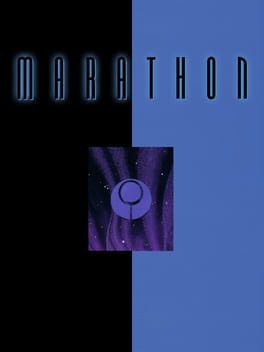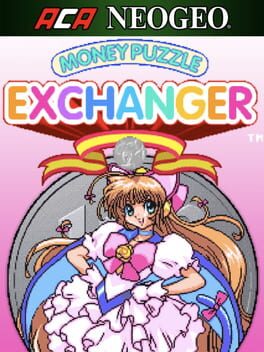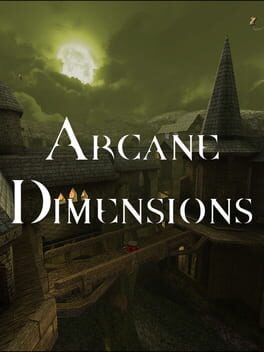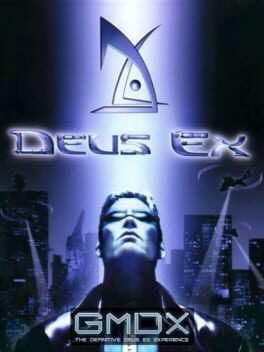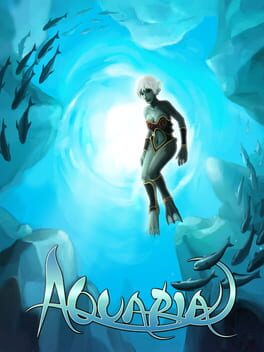1994
The Marathon trilogy stands out from most FPS games of the time and even today for its extremely involved story, communicated to the player through diegetic computer terminals which I find aesthetically fascinating to this day. Despite having zero interactivity, limited graphics, and no voiceover, these terminals prove to be a surprisingly versatile expository tool, thanks to writing that is exceptional even by today's standards (at least in the video game realm).
The thing is, while I have a lot of nostalgia for the games, I find them rather tedious to play today. There are a few ideas that put me in mind of resource management-heavy games like System Shock, namely limited saving via "pattern buffers," diegetic healing terminals, and vacuum-based levels that drain your oxygen tank and restrict you to certain weapons. Unfortunately, inventory management is nonexistent, and the systems overall are hardly more complex than Doom's. Taken as action games, and despite a few impressive features like alternate fire modes and dual wielding, Marathon and its sequels play for the most part plays like Doom clones with shoddy AI and floaty physics. They could be excellent if they either had better/more nuanced action gameplay, or were expanded into more robust survival/resource management sims—the complicated story and cryptic level design have me leaning toward the latter—but as it stands I find the trilogy more of an interesting relic than anything else.
The thing is, while I have a lot of nostalgia for the games, I find them rather tedious to play today. There are a few ideas that put me in mind of resource management-heavy games like System Shock, namely limited saving via "pattern buffers," diegetic healing terminals, and vacuum-based levels that drain your oxygen tank and restrict you to certain weapons. Unfortunately, inventory management is nonexistent, and the systems overall are hardly more complex than Doom's. Taken as action games, and despite a few impressive features like alternate fire modes and dual wielding, Marathon and its sequels play for the most part plays like Doom clones with shoddy AI and floaty physics. They could be excellent if they either had better/more nuanced action gameplay, or were expanded into more robust survival/resource management sims—the complicated story and cryptic level design have me leaning toward the latter—but as it stands I find the trilogy more of an interesting relic than anything else.
This is the first Zelda game I've ever beaten (on an emulator of course). I didn't grow up with a Nintendo in the house, and the mentality required to get through a lot of those really old console games is kind of alien to me. So you can rest assured that exactly zero nostalgia is informing my statement that A Link to the Past is to this day the gold standard in the action-adventure genre. It's frankly baffling to me that it could be be considered dated when it has at least as much going for it as many of the 2D indie darlings of recent years, or overly cryptic or punishing considering the massive popularity of a certain developer of action-RPG titles.
The overworld is large and open enough to feel expansive, and small enough to backtrack through without feeling like a slog. There are enough secrets and side areas available from the beginning to encourage poking around right away, while tantalazingly inaccessible ones hint at future abilities.
Dungeons are on the whole immaculately designed. Each one has a distinctive identity, iterating on concepts and challenges from previous dungeons while introducing new ones. The bosses are just as consistent.
Link's inventory strikes a rare balance between offering a lot of options without being too much. Dungeon items remain useful long after they've solved their initial puzzle, with most of them having multiple uses inside and outside of combat.
Combat itself is as good as it gets. Your basic attack remains useful throughout the game, and mastering it requires careful management of both your position and orientation. Your expanding inventory unlocks a variety of options without risking redundancy or trivializing the challenges you face. Controls are crisp and responsive, and enemy types are both numerous and differentiated.
A Link to the Past is imperfect, as games of its kind inevitably are. All things considered, there's remarkably little about it to actually criticize without going into detail about specific puzzle solutions or boss strategies, all of which recede in the light of what the game gets right—which is damn near everything.
The overworld is large and open enough to feel expansive, and small enough to backtrack through without feeling like a slog. There are enough secrets and side areas available from the beginning to encourage poking around right away, while tantalazingly inaccessible ones hint at future abilities.
Dungeons are on the whole immaculately designed. Each one has a distinctive identity, iterating on concepts and challenges from previous dungeons while introducing new ones. The bosses are just as consistent.
Link's inventory strikes a rare balance between offering a lot of options without being too much. Dungeon items remain useful long after they've solved their initial puzzle, with most of them having multiple uses inside and outside of combat.
Combat itself is as good as it gets. Your basic attack remains useful throughout the game, and mastering it requires careful management of both your position and orientation. Your expanding inventory unlocks a variety of options without risking redundancy or trivializing the challenges you face. Controls are crisp and responsive, and enemy types are both numerous and differentiated.
A Link to the Past is imperfect, as games of its kind inevitably are. All things considered, there's remarkably little about it to actually criticize without going into detail about specific puzzle solutions or boss strategies, all of which recede in the light of what the game gets right—which is damn near everything.
2017
"The greatest indie metroidvania"—so here's the 8/10 it deserves.
The main thing Hollow Knight has going for it is of course its massive size and true nonlinearity. When I was deep in the process of exploring, finding secrets, getting lost, finding my way again, seeing how different regions link up—these were the times when I thought I was playing one of my favorite games. The charm system is pretty cool as it is, but it along with all the other goodies in the game gives plenty enough reason to explore every nook and cranny (and overlook some pretty bad Super Meat Boy-esque spike maze level design along the way). There's so much to admire in how distinct each region feels and how elegantly they all fit together, and the amount of freedom you're given after a certain point is something few games arrive at even when they strive for it.
But.
The issue is that Hollow Knight's very scale tends to emphasize one of its genre's inherent limitations. Backtracking is built into the genre's DNA—and this is no bad thing, in fact it's kind of the whole point: revisiting areas with new tools and with a new purpose develops a much more organic relation to space than is usually the case in more linear games. The tradeoff is repetition: not only is the space itself usually unchanged, but obstacles are usually static as well. In a game this big and this long, in which backtracking is therefore not only mandatory but extremely time-consuming, seeing the exact same enemies respawn in the exact same places over and over again starts to feel like a drag—much moreso in a 40-ish hour game than in a 10-ish one like Super Metroid. Moreover, Hollow Knight, like Super Metroid, wants you to be immersed in a massive and seemingly "alive" world, but the world and its inhabitants are essentially static, existing only as a backdrop to the player's "hero's journey." Having no internal dynamics or logic of their own, they change, if at all, only in response to the player's actions, and then only rarely. (I was almost ecstatic when I first got to the Infected Crossroads, and then massively disappointed when I realized that other areas of the game would not get the same treatment.) Size aside, the difference between the two games is that only one of them came out in the same year as Rain World: a game that shows us how the player-game relationship can be reimagined in the context of a 2D platformer with a massive persistent world, and how decentering the player character can result in a more rewarding and immersive experience.
There are other aspects of Hollow Knight I'm ambivalent about. The "soulslike" elements are a decidedly mixed bag, and despite the variety within the player's toolkit, the core moveset feels kind of generic. Samus may have fewer abilities at her disposal, but the ones she does have define her as a character to a far greater extent than... (wait, what's the little guy's name again?). I also have to admit that I balked at the endgame boss rush, but that's more because I took a long break between getting the three thingamugugs and facing the Titledrop Monster, and completely lost any momentum in between. I may return to Hollow Knight—some years down the line—but if I do it'll be from the very beginning.
The main thing Hollow Knight has going for it is of course its massive size and true nonlinearity. When I was deep in the process of exploring, finding secrets, getting lost, finding my way again, seeing how different regions link up—these were the times when I thought I was playing one of my favorite games. The charm system is pretty cool as it is, but it along with all the other goodies in the game gives plenty enough reason to explore every nook and cranny (and overlook some pretty bad Super Meat Boy-esque spike maze level design along the way). There's so much to admire in how distinct each region feels and how elegantly they all fit together, and the amount of freedom you're given after a certain point is something few games arrive at even when they strive for it.
But.
The issue is that Hollow Knight's very scale tends to emphasize one of its genre's inherent limitations. Backtracking is built into the genre's DNA—and this is no bad thing, in fact it's kind of the whole point: revisiting areas with new tools and with a new purpose develops a much more organic relation to space than is usually the case in more linear games. The tradeoff is repetition: not only is the space itself usually unchanged, but obstacles are usually static as well. In a game this big and this long, in which backtracking is therefore not only mandatory but extremely time-consuming, seeing the exact same enemies respawn in the exact same places over and over again starts to feel like a drag—much moreso in a 40-ish hour game than in a 10-ish one like Super Metroid. Moreover, Hollow Knight, like Super Metroid, wants you to be immersed in a massive and seemingly "alive" world, but the world and its inhabitants are essentially static, existing only as a backdrop to the player's "hero's journey." Having no internal dynamics or logic of their own, they change, if at all, only in response to the player's actions, and then only rarely. (I was almost ecstatic when I first got to the Infected Crossroads, and then massively disappointed when I realized that other areas of the game would not get the same treatment.) Size aside, the difference between the two games is that only one of them came out in the same year as Rain World: a game that shows us how the player-game relationship can be reimagined in the context of a 2D platformer with a massive persistent world, and how decentering the player character can result in a more rewarding and immersive experience.
There are other aspects of Hollow Knight I'm ambivalent about. The "soulslike" elements are a decidedly mixed bag, and despite the variety within the player's toolkit, the core moveset feels kind of generic. Samus may have fewer abilities at her disposal, but the ones she does have define her as a character to a far greater extent than... (wait, what's the little guy's name again?). I also have to admit that I balked at the endgame boss rush, but that's more because I took a long break between getting the three thingamugugs and facing the Titledrop Monster, and completely lost any momentum in between. I may return to Hollow Knight—some years down the line—but if I do it'll be from the very beginning.
2018
The most exposed single player Quake mod out there by far, and also thankfully the best and coolest. Between the levels that come out of the box to the still-growing number of third- (fourth?) party maps that have been made for it (including my own: google Threat Assessment on Quaddicted dot com, and look out for Azure Anesthetics "when it's done") you have every type of Quake experience imaginable, from tight gameplay-focused maps to massive adventures where you can spend hours combing for secrets. While I'm not in love with all of the additions, the amount of added content from monsters, items, and traps to under-the-hood mapper goodies is as impressive as it gets. But to me, the single most important change is converting the shotguns to projectile weapons, which raises the skill ceiling while also subtly upping their raw power (or at least making gibs come more often?). And when I thought it couldn't get any better, the Jump Mod's jump boots were added.
2013
I have to admit that compared to Deus Ex, I actually prefer the earlier Looking Glass games like Thief and the original System Shock. There are a few reasons for this, but only one of them is relevant to this review. Basically, while I do abstractly admire action RPGs that accommodate a variety of different builds and playstyles, in practice this often results in a compromise where the individual components are less robust than they could be if the development honed in on just one of them, or a few closely related ones. Balance issues are a side effect of this. Of course, the response is that I'm just nitpicker who misses the forest for the trees, and sure, I'm willing to concede that perspective to an extent. I suppose it's just a philosophical difference I have with hardcore fans of RPGs. (And don't get me wrong, Deus Ex is a really cool game, it's just not near the top of my favorites list.)
Then again there's GMDX, a mod that purports to fix a lot of Deus Ex's balance issues and generally add a layer of polish. Turns out this is the last thing the game needed to retain any kind of personality. I got to Paris by the time I gave up, but I realized the problem early on: if the sniper rifle isn't a better weapon at close range than an un-upgraded shotgun, what is even the point of Deus Ex?
Then again there's GMDX, a mod that purports to fix a lot of Deus Ex's balance issues and generally add a layer of polish. Turns out this is the last thing the game needed to retain any kind of personality. I got to Paris by the time I gave up, but I realized the problem early on: if the sniper rifle isn't a better weapon at close range than an un-upgraded shotgun, what is even the point of Deus Ex?
2007
This is definitely the worst game I'd consider a favorite, for reasons I'd fully cover in a review that would be too long to actually bother writing, but to summarize: Aquaria is a Zelda-like action-adventure game with metroidvania-style progression that takes place in an expansive aquatic world. The problem is the characters are boring, the story is boring, the voiceover is corny, the dungeons are mostly boring, the puzzles are trash, the bosses are trash, the Simon Says boss especially is trash, the late game areas are half-baked...
Here's the thing though: if you place emphasis on the "adventure" over the "action" aspect and pretend Aquaria is more of an exploration game (with occasional pressure from hostile wildlife) then it's actually pretty goddamn beautiful. First of all it's huge. Not Hollow Knight huge but it's way bigger than it initially seems. The camera dynamically zooms based on the size of the area you're in, which, especially near the beginning of the game when each new region you unlock is bigger than the last, goes a long way towards leaving an impression of sheer scale. The progression is pretty conventional metroidvania, but you're given a surprising amount of freedom to explore from a relatively early stage in the game. And Aquaria is a world that encourages that kind of engagement, rich as it is with so many unique locaitons and different forms of life. The beauty and variety of Aquaria is alone is enough to make me want to seek out its every nook and cranny and take immense pleasure in doing so. It's easily a 20+ hour playthrough if you find all the optional content (just don't actually complete it because again, the bosses etc. are trash), but I've done it twice—that's how fucking lush this world is to me. Sure, the game overall would be better if it had better gameplay, but there are any number of more polished and finely-tuned games, many of them featuring supposedly great characters and deep themes, with worlds that feel completely lifeless to me.
Aquaria's soundtrack is equally gorgeous, both in terms of its individual tracks in isolation, and the way motifs are reused across them, giving the game an almost symphonic quality.
Returning to Aquaria's gameplay, there is one aspect of it that I'll defend, namely that it can be controlled completely with the mouse. Technically this is the least efficient way of playing, since you can move and switch forms using the keyboard. Having to use the mouse to move, aim, AND switch forms with the color wheel would probably drive most players up a wall, but I personally find adapting to unusual control schemes to be an interesting challenge. It also makes the game a bit harder, which is probably a good thing since Aquaria is generally a pretty easy game.
Here's the thing though: if you place emphasis on the "adventure" over the "action" aspect and pretend Aquaria is more of an exploration game (with occasional pressure from hostile wildlife) then it's actually pretty goddamn beautiful. First of all it's huge. Not Hollow Knight huge but it's way bigger than it initially seems. The camera dynamically zooms based on the size of the area you're in, which, especially near the beginning of the game when each new region you unlock is bigger than the last, goes a long way towards leaving an impression of sheer scale. The progression is pretty conventional metroidvania, but you're given a surprising amount of freedom to explore from a relatively early stage in the game. And Aquaria is a world that encourages that kind of engagement, rich as it is with so many unique locaitons and different forms of life. The beauty and variety of Aquaria is alone is enough to make me want to seek out its every nook and cranny and take immense pleasure in doing so. It's easily a 20+ hour playthrough if you find all the optional content (just don't actually complete it because again, the bosses etc. are trash), but I've done it twice—that's how fucking lush this world is to me. Sure, the game overall would be better if it had better gameplay, but there are any number of more polished and finely-tuned games, many of them featuring supposedly great characters and deep themes, with worlds that feel completely lifeless to me.
Aquaria's soundtrack is equally gorgeous, both in terms of its individual tracks in isolation, and the way motifs are reused across them, giving the game an almost symphonic quality.
Returning to Aquaria's gameplay, there is one aspect of it that I'll defend, namely that it can be controlled completely with the mouse. Technically this is the least efficient way of playing, since you can move and switch forms using the keyboard. Having to use the mouse to move, aim, AND switch forms with the color wheel would probably drive most players up a wall, but I personally find adapting to unusual control schemes to be an interesting challenge. It also makes the game a bit harder, which is probably a good thing since Aquaria is generally a pretty easy game.
Doom should be understood not as a "first-person shooter" but as a highly asymmetrical real-time chess variant. While the first Doom is arguably the better experience right out of the box, mainly due to the sequel's less consistent level design, the addition of the super shotgun and a richer bestiary add a great deal of depth to the game. Of course, Doom II is not just the game out of the proverbial box: it's also the entry ticket to perhaps the single richest archive of fan-made levels for any game, and it's this fact that makes it an essential game. Many people tend to regard fan-made content as necessarily inferior to "professional" design work, especially when it dares to push the difficulty ceiling beyond their comfort zone, but this is ignorance and laziness. The truth is quite the opposite: the collective effort of iteration over years and decades inevitably pushes a game's level design in directions that no single team could accomplish or even imagine in the span of a release cycle or two. Of course that isn't possible if the base game isn't good at its core. Doom II just happens to be perfect.
2017
